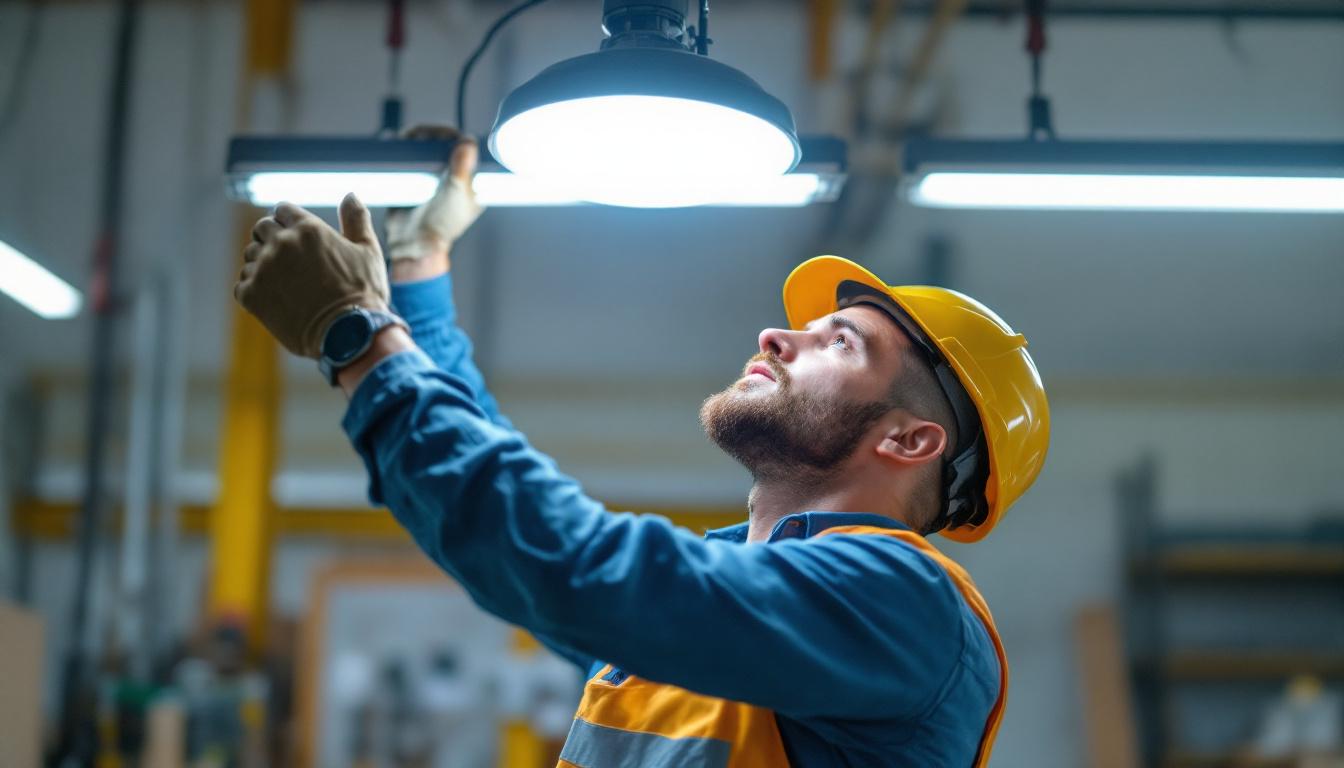
In the ever-evolving world of lighting technology, staying informed about the latest advancements is crucial for lighting contractors. Among the various types of bulbs available, Type B bulbs have gained significant attention in recent years. Understanding their features, benefits, and applications can enhance a contractor’s service offerings and improve client satisfaction. This article delves into the importance of Type B bulbs and why every lighting contractor should remain updated on this essential lighting solution.
Type B bulbs are a specific category of fluorescent lighting that are designed for use in a variety of applications. Unlike traditional incandescent bulbs, Type B bulbs utilize a different technology that allows for greater energy efficiency and longer lifespans. These bulbs are typically used in fixtures designed for linear fluorescent tubes, making them an essential component in commercial and residential lighting setups.
Type B bulbs are distinguished by their unique construction and operational features. They often come in various sizes and shapes, allowing for versatility in installation. One of the most notable characteristics is their direct wiring capability, which means they can be connected directly to line voltage without the need for a ballast. This not only simplifies installation but also reduces maintenance costs over time.
Additionally, Type B bulbs are known for their high lumen output, providing bright and efficient lighting. They are available in different color temperatures, allowing contractors to tailor the lighting to specific environments, whether it be warm, cool, or daylight white. This adaptability makes Type B bulbs an attractive option for a wide range of lighting projects. Furthermore, many Type B bulbs are designed with a longer lifespan than traditional fluorescent options, often lasting up to 50,000 hours, which translates to fewer replacements and reduced waste over time. This longevity is particularly beneficial in commercial settings, where minimizing downtime and maintenance interruptions is crucial for operational efficiency.
When evaluating the benefits of Type B bulbs, it’s essential to compare them with other common bulb types. For instance, traditional fluorescent bulbs require a ballast for operation, which can add complexity to installation and increase the likelihood of failure. In contrast, Type B bulbs eliminate this component, streamlining the installation process.
LED bulbs are another popular option in the market, known for their energy efficiency and longevity. However, Type B bulbs often have a lower initial cost and can be more suitable for certain applications, particularly in environments where high lumen output is required. Understanding these differences allows lighting contractors to make informed decisions when recommending products to clients. Additionally, Type B bulbs can be an excellent choice for retrofitting existing fixtures, as they can easily replace older fluorescent tubes without the need for extensive rewiring or modifications. This ease of retrofitting not only saves time but also reduces labor costs, making Type B bulbs a practical solution for upgrading lighting systems in both residential and commercial spaces.
Integrating Type B bulbs into lighting projects offers numerous advantages for contractors and their clients alike. From energy savings to improved lighting quality, these bulbs provide a compelling case for their adoption in various settings.
One of the most significant benefits of Type B bulbs is their energy efficiency. By eliminating the need for a ballast, these bulbs consume less energy, resulting in lower electricity bills for clients. This energy efficiency is particularly advantageous in commercial settings, where lighting costs can account for a substantial portion of operational expenses.
Moreover, the longevity of Type B bulbs—often rated for tens of thousands of hours—means that clients will experience fewer replacements over time. This not only reduces maintenance costs but also minimizes disruptions in business operations, making Type B bulbs a cost-effective solution in the long run. In addition, many utility companies offer rebates or incentives for businesses that switch to energy-efficient lighting solutions, further enhancing the financial benefits of adopting Type B bulbs.
Type B bulbs are designed to provide superior lighting quality compared to traditional fluorescent options. Their high lumen output ensures bright and even illumination, which is essential in environments where visibility is critical, such as retail spaces, offices, and warehouses.
Additionally, the availability of various color temperatures allows contractors to customize the lighting to suit specific needs. For example, cooler color temperatures can enhance focus and productivity in work environments, while warmer tones can create a welcoming atmosphere in residential settings. This flexibility in lighting design can significantly enhance the overall aesthetic and functionality of a space. Furthermore, Type B bulbs often have a higher Color Rendering Index (CRI), which means they can accurately represent colors, making them ideal for applications such as art galleries, showrooms, and photography studios where color accuracy is paramount.
Another notable aspect of Type B bulbs is their reduced flicker compared to traditional fluorescent lighting. This flicker can cause eye strain and discomfort over prolonged exposure, leading to decreased productivity and increased fatigue among workers. Type B bulbs, with their stable light output, contribute to a more comfortable and healthier working environment, promoting well-being and efficiency. As businesses continue to prioritize employee satisfaction and health, the adoption of Type B bulbs becomes an even more attractive option for modern lighting solutions.
Type B bulbs are versatile and can be used in a wide range of applications, making them a valuable addition to any lighting contractor’s toolkit. Understanding where and how to implement these bulbs can lead to more successful projects and satisfied clients.
In commercial environments, Type B bulbs are particularly effective in areas that require bright, consistent lighting. Retail stores, for example, benefit from the enhanced visibility that Type B bulbs provide, helping to showcase products and create an inviting atmosphere for customers. Additionally, their energy efficiency contributes to lower operational costs, making them an attractive choice for business owners.
Offices also stand to gain from the use of Type B bulbs. The ability to select different color temperatures allows for the creation of a conducive work environment, promoting productivity and employee well-being. By incorporating Type B bulbs into office lighting designs, contractors can help clients achieve their desired ambiance while also addressing energy efficiency concerns.
Moreover, Type B bulbs are ideal for use in conference rooms and collaborative spaces, where clear visibility is essential for presentations and discussions. Their ability to render colors accurately can enhance visual displays, making them a preferred choice for businesses that rely heavily on visual communication. Additionally, the longevity of Type B bulbs ensures that maintenance costs are minimized, allowing businesses to focus more on their operations rather than frequent bulb replacements.
Type B bulbs are not limited to commercial use; they also have a place in residential lighting. Homeowners looking to upgrade their lighting systems can benefit from the energy savings and enhanced quality that Type B bulbs offer. Whether used in kitchens, living rooms, or outdoor spaces, these bulbs can provide the necessary brightness while maintaining aesthetic appeal.
Furthermore, the ease of installation makes Type B bulbs an attractive option for DIY homeowners. Contractors can educate clients on the advantages of these bulbs, empowering them to make informed decisions about their lighting needs.
In addition to their practical benefits, Type B bulbs can also be utilized in smart home systems, allowing homeowners to control their lighting through mobile apps or voice commands. This integration not only adds convenience but also enables users to customize their lighting according to mood or activity, whether it’s a cozy dinner setting or a bright, energizing environment for morning routines. The flexibility of Type B bulbs in adapting to various smart technologies can significantly enhance the overall living experience, making them a forward-thinking choice for modern homes.
As technology continues to advance, staying updated on the latest developments in Type B bulbs is essential for lighting contractors. This knowledge not only enhances service offerings but also positions contractors as trusted experts in the field.
Participating in workshops, webinars, and industry conferences can provide valuable insights into new products and technologies related to Type B bulbs. Many manufacturers offer training sessions that cover installation techniques, energy efficiency standards, and the latest innovations in bulb design. By engaging in continuous education, contractors can ensure they remain at the forefront of the industry.
Additionally, networking with other professionals in the lighting field can lead to the exchange of ideas and best practices. Sharing experiences and insights can help contractors refine their skills and adapt to changing market demands.
Keeping an eye on industry trends is crucial for understanding where Type B bulbs fit into the larger lighting landscape. Following reputable lighting publications, blogs, and forums can provide valuable information about emerging technologies, regulatory changes, and consumer preferences. This awareness allows contractors to adjust their strategies and offerings accordingly, ensuring they remain competitive in the marketplace.
Type B bulbs represent a significant advancement in lighting technology, offering numerous benefits for both contractors and clients. Their energy efficiency, enhanced lighting quality, and versatility make them an essential component of modern lighting design. By staying updated on Type B bulb technology, contractors can enhance their service offerings, improve client satisfaction, and ultimately drive business success.
As the lighting industry continues to evolve, embracing new technologies and understanding their applications will be key for lighting contractors. Type B bulbs are just one example of how staying informed can lead to better project outcomes and a stronger reputation in the field. Investing time in learning about these bulbs and their benefits will undoubtedly pay off in the long run.
Ready to take your lighting projects to the next level with Type B bulbs? At LumenWholesale, we provide lighting contractors with the highest quality, spec-grade lighting products at prices that can’t be beaten. Say goodbye to local distributor markups and hello to a vast selection of reliable, high-performance lighting that meets the strictest industry standards. Plus, with free shipping on bulk orders, you can stock up on premium lighting solutions without worrying about hidden fees. Don’t compromise on quality or value—choose LumenWholesale for the perfect blend of affordability and convenience. Elevate your lighting game today by visiting Wholesale Lighting at the Best Value.

Discover how “Buy Lights” streamlines the purchasing process for lighting contractors, offering efficient solutions and expert insights to illuminate your projects with ease..

Discover the essential insights lighting contractors need about LED corn lights.

Discover essential insights and expert tips for lighting contractors on selecting and utilizing overhead work lights effectively.

Discover the intricacies of 3 light lamp posts from a lighting contractor’s perspective.